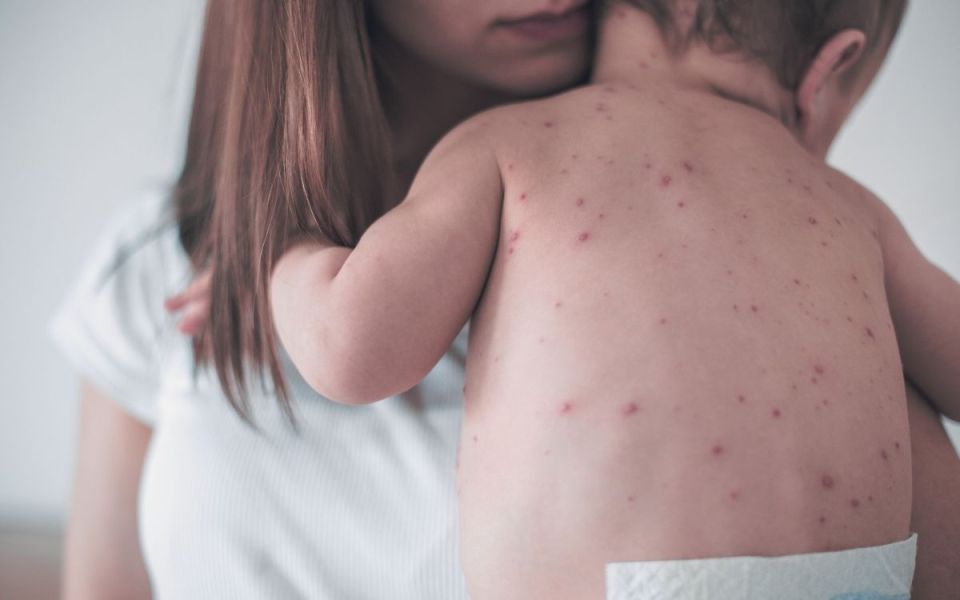Why Measles Has Gone From Eradicated To Outbreak

Going viral after retirement sounds cool - unless it’s measles. That virus is like your weird Uncle Larry: wild, unwelcome, and definitely not funny. Measles was declared eradicated from the U.S. in 2000, but has since come out of retirement [1]. As of this writing, there have been over 700 confirmed measles cases in the U.S. in 2025, with children accounting for 70%. In comparison, only 285 cases were reported in 2024, less than half of the current outbreak [2]. The measles virus is extremely contagious and dangerous, especially in vulnerable populations. Complications include pneumonia, encephalitis, and death.
What Is the Measles?
Measles is a viral respiratory infection caused by the measles virus, part of the Paramyxovirus family, which includes mumps and respiratory syncytial virus (RSV) [3]. Unlike influenza, measles has only one serotype (or version), which makes vaccines more effective. However, like influenza and COVID-19, the measles spreads through airborne droplets and is among the most contagious viruses [4].
Symptoms:
- High fever
- Cough
- Runny nose
- Red, watery eyes
- Tiny white spots inside the mouth (Koplik spots)
- Rash that usually starts on the face and spreads downward
Complications:
- Ear infections
- Diarrhea
- Pneumonia and other lung problems
- Swelling of the brain (encephalitis)
- Subacute sclerosing panencephalitis (SSPE), a rare but serious brain disorder that can appear years after infection
- Death in severe cases
A Brief History of Measles
The first detailed description of measles dates back to the 10th century, recorded by Persian physician Rhaze (al-Razi), who served as chief physician at the hospital in Baghdad [5]. Before the development of a vaccine, measles infected tens of millions of people worldwide every year [5]. In the United States alone, an estimated three to four million people were infected each year, leading to around 48,000 hospitalizations, 1,000 cases of brain swelling (encephalitis), and 400 to 500 deaths each year [1].
Vaccine Development and Impact
In the early 1700s, the first inoculations from smallpox were developed, ushering in a new era of protection from diseases. In 1758, inspired by the success of smallpox inoculation, Scottish physician Francis Home attempted to protect healthy children from measles by using blood from an infected child in a process called inoculation by variolation [5]. However, Dr. Home soon abandoned this approach due to the difficulty of obtaining infectious material at the right stage of the illness for successful inoculation. Around 200 years later, John Enders and his team developed the first measles vaccine and licensed it in the United States in 1963 [5]. In 1968, microbiologist Maurice Hilleman developed an improved measles vaccine, followed by a combined measles, mumps, and rubella (MMR) vaccine in 1971 [5].
The U.S. introduced a voluntary single-dose measles vaccine for school entry in 1978. As a result, measles cases dropped by 90%. However, outbreaks still occurred every three to five years, mainly due to unvaccinated preschoolers and a vaccine success rate of only ~95% [5]. Between 1989 and 1991, a significant outbreak occurred, resulting in about 55,000 cases and 123 deaths. In response, the national measles vaccination program implemented a two-dose vaccine [4]. This strategy worked so well that measles was declared eradicated in the United States in the year 2000 [4].
Measles Today: The Return of a Preventable Disease
Twenty-five years later, guess who’s back? Yep - just like weird Uncle Larry showing up uninvited to a Texas barbecue, measles has come out of retirement - and no one’s thrilled. So, why is there a sudden increase in measles? According to the CDC, MMR vaccination rates in the United States have fallen below the critical 95% threshold, and global measles activity is rising [2]. Such conditions increase the chances of an unvaccinated traveler contracting measles abroad and bringing it back to the United States. Talk about a very unwanted souvenir.
Going viral after retirement might sound cool - unless it’s measles. The spike in 2025 cases is a wake-up call: we can’t afford to get complacent. Clinical trial data on measles vaccines are unambiguous; they save lives. Accurate, transparent data must remain accessible and easily understood so people can make informed decisions based on science, not speculation.
Measles is preventable.
Still, some folks trust TikTok more than decades of vaccine research - because nothing says “reliable data” like a video weird Uncle Larry posted at 2 am. We encourage everyone to look at the clinical trial data, talk to healthcare professionals, and make evidence-based choices.
Thanks to decades of clinical research, we have safe, effective vaccines that have nearly wiped this virus out. So if you’re going to go viral, let it be on social media, not in a hospital ward.
Director of Creative Strategies Rebecca Simpson
References:
[1] Centers for Disease Control. (9 May, 2024). History of measles. U.S. Department of Health and Human Services. [website, accessed 8 April, 2025] https://www.cdc.gov/measles/about/history.html
[2] Center for Disease Control. (4 April, 2025). Measles cases and outbreaks. U.S. Department of Health and Human Services. [Website, accessed 8 April, 2025] https://www.cdc.gov/measles/data-research/index.html
[3] Park, G. Y. S., & Tishkowski, K. (2021). Paramyxovirus. https://www.ncbi.nlm.nih.gov/books/NBK567794/
[4] Centers for Disease Control. (15 July, 2024). Clinical overview of measles. U.S. Department of Health and Human Services. [website, accessed 8 April, 2025] https://www.cdc.gov/measles/hcp/clinical-overview/index.html
[5] Berche, P. (2022). History of measles. La Presse Médicale, 51(3), 104149. https://www.sciencedirect.com/science/article/pii/S0755498222000422



